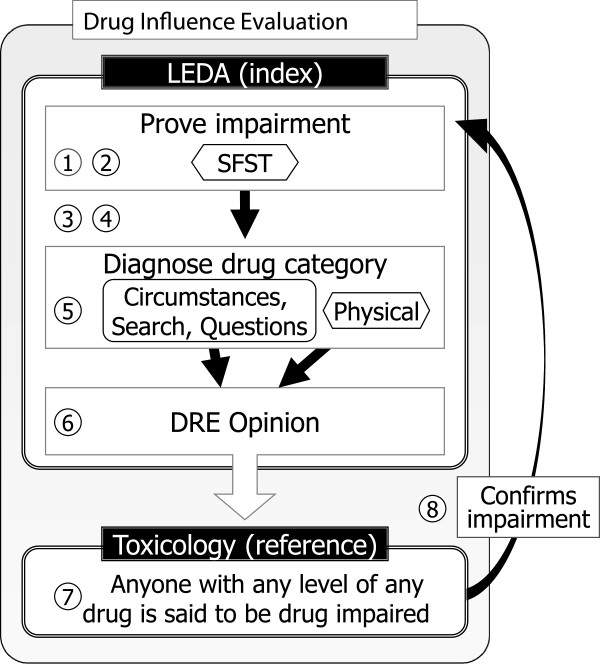Figure 1.
US law enforcement Drug Influence Evaluation theory. 1 Driver fails a Standardized Field Sobriety Test (SFST). 2 A failed SFST always proves impairment. 3 Breath alcohol test finds a low alcohol level, ruling out alcohol as the cause of impairment proven by SFST. 4 Medical evaluation by the DRE officer rules out a medical cause of impairment proven by the SFST. 5 DRE exam involving circumstantial facts, questioning, a physical search (if done), and a physical exam, is used to identify the presence in the subject’s body of a drug belonging to one of several categories. 6 A trained Drug Recognition Expert opines that the driver is, or is not, impaired by a drug belonging to a particular category. 7 Blood or urine is tested for drugs. 8 Toxicology revealing a drug in the predicted category circles back to confirm the SFST’s proof of impairment. The person must have been impaired—How else could the officer have made this very specific drug category prediction? Alternatively, when a drug in the predicted category is not found, some validation study accuracy calculations consider any drug in any other category as proving impairment—After all the officer predicted a drug, and a drug was found.

